Nunavut is a vast territory located in the far northern reaches of Canada. Home to a wide variety of wildlife, Nunavut is a birdwatcher’s paradise.
With its unique geography, Nunavut has become a haven for many species of birds, both migratory and year-round residents.
From majestic eagles to colorful songbirds, Nunavut is home to an abundance of avian life. With its rugged landscapes, abundant resources, and varied climates, Nunavut offers plenty of opportunities for birders to observe and enjoy the region’s diverse bird population.
1. Lapland Longspur
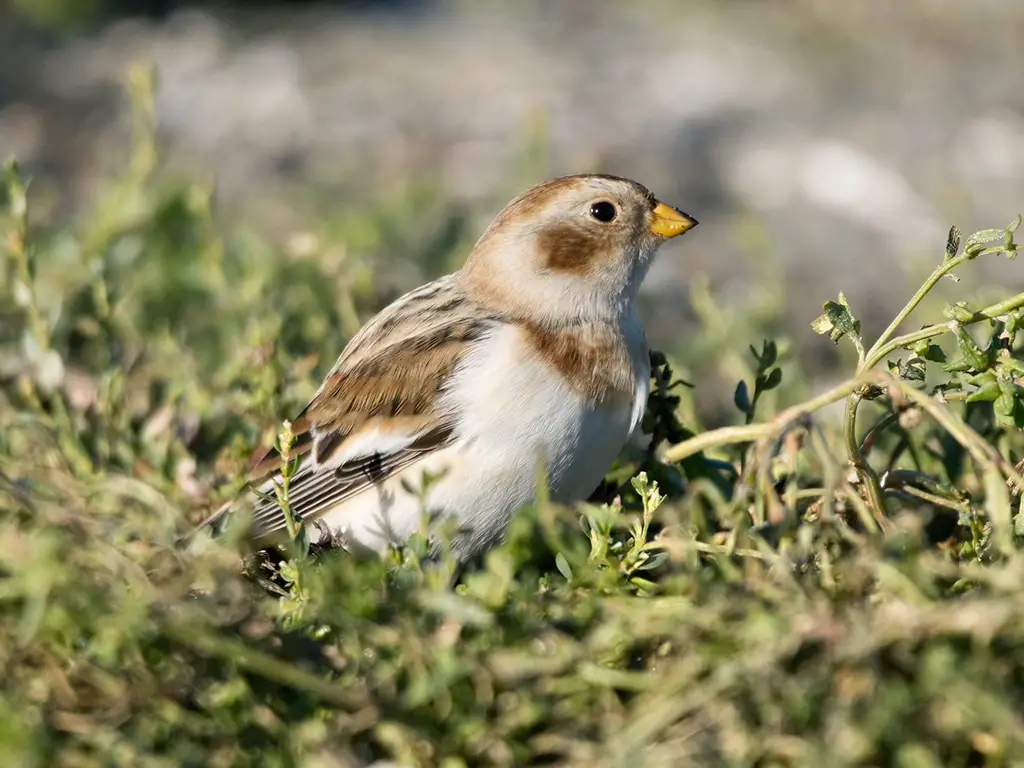
The Lapland longspur is a small passerine bird that belongs to the family Calcariidae, a group of finches that are distinct from the Fringillidae family.
It is commonly known as the Lapland bunting and is native to the Arctic regions of the Northern Hemisphere.
The Lapland longspur is small in size, measuring between 12-14 cm in length. It has a black crown and nape, with white stripes on its back and sides. Its underparts are white with streaked black, while its wings are dark grey.
Its tail is long and white with a black subterminal band. The Lapland longspur feeds on various grasses and seeds, and will occasionally eat insects and berries.
It is a migratory bird, and in the summer months, it can be found across northern Europe and North America.
It is an important species for conservation, as it is threatened by habitat loss and climate change. The Lapland longspur is also an important species for birdwatching, as its distinctive plumage and song make it an attractive bird to observe.
| Kingdom | Animalia |
| Phylum | Chordata |
| Class | Aves |
| Order | Passeriformes |
| Family | Calcariidae |
| Genus | Calcarius |
| Species | C. lapponicus |
2. Baird’s Sandpiper
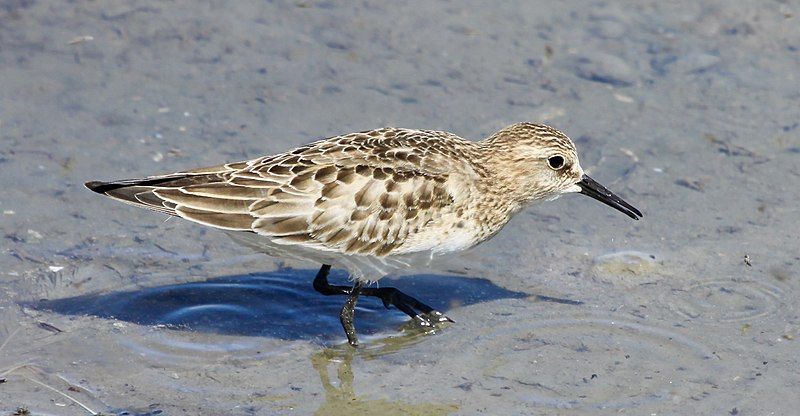
Baird’s sandpiper is a small shorebird belonging to the calidrid family. It was originally placed in the genus Erolia, but in 1973, this genus was renamed and combined with the genus Calidris.
The genus name, Calidris, is derived from the Ancient Greek term kalidris or skalidris, which was used by Aristotle to refer to certain grey-colored birds that live near water bodies.
Baird’s sandpiper, like other shorebirds, is known for its migratory habits, covering long distances in search of food and nesting habitats.
Their diet consists largely of insects and other invertebrates, which they forage for on the shoreline, in mudflats, and shallow waters.
Due to their migratory behaviour and the fact that they rely on wetlands for their food, Baird’s sandpiper is considered a vulnerable species and is listed in the IUCN Red List of Threatened Species.
| Kingdom | Animalia |
| Phylum | Chordata |
| Class | Aves |
| Order | Charadriiformes |
| Family | Scolopacidae |
| Genus | Calidris |
| Species | C. bairdii |
3. Stilt Sandpiper
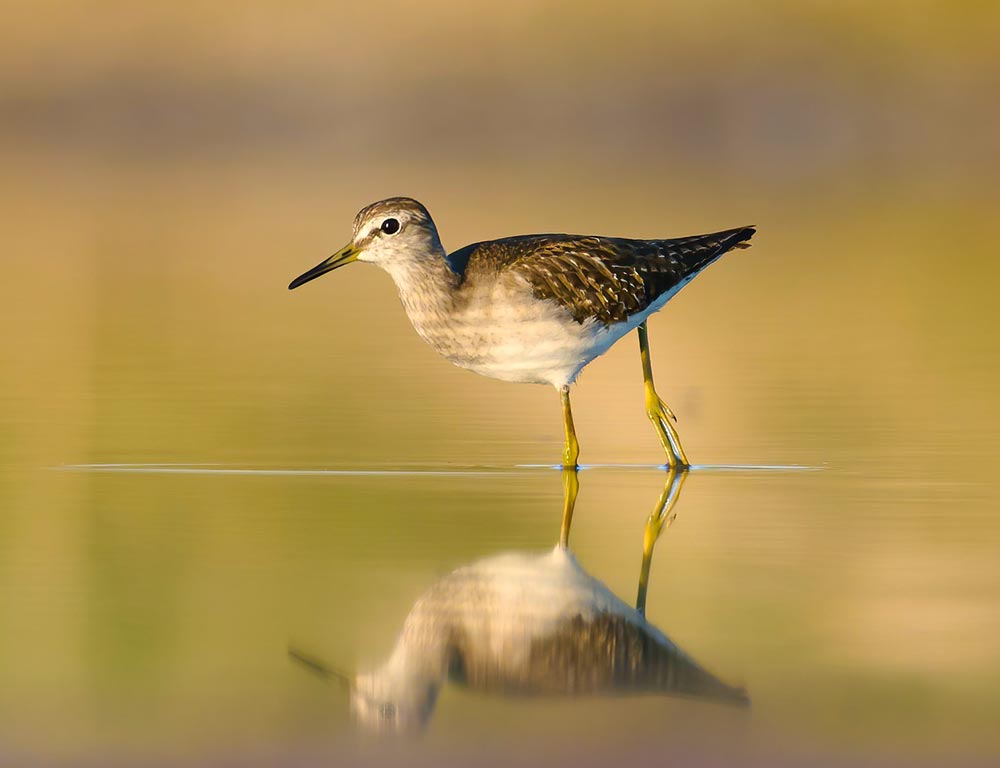
The Stilt Sandpiper is a small shorebird belonging to the genus Kalidris or Skalidris, which are terms drawn from Ancient Greek used by Aristotle to refer to grey-colored waterside birds.
Its scientific name, Himantopus, is derived from two Greek words that mean “strap foot” or “thong foot”, which is a fitting description of the bird’s unique long, thin legs.
This species of sandpiper is found near wetland habitats such as the shores of lakes and estuaries, as well as in coastal areas.
It prefers to feed in shallow water, where it looks for small aquatic invertebrates, mollusks, and other food sources.
The Stilt Sandpiper is also known to migrate long distances to reach its wintering grounds.
| Kingdom | Animalia |
| Phylum | Chordata |
| Class | Aves |
| Order | Charadriiformes |
| Family | Scolopacidae |
| Genus | Calidris |
| Species | C. himantopus |
4. Buff-Breasted Sandpiper
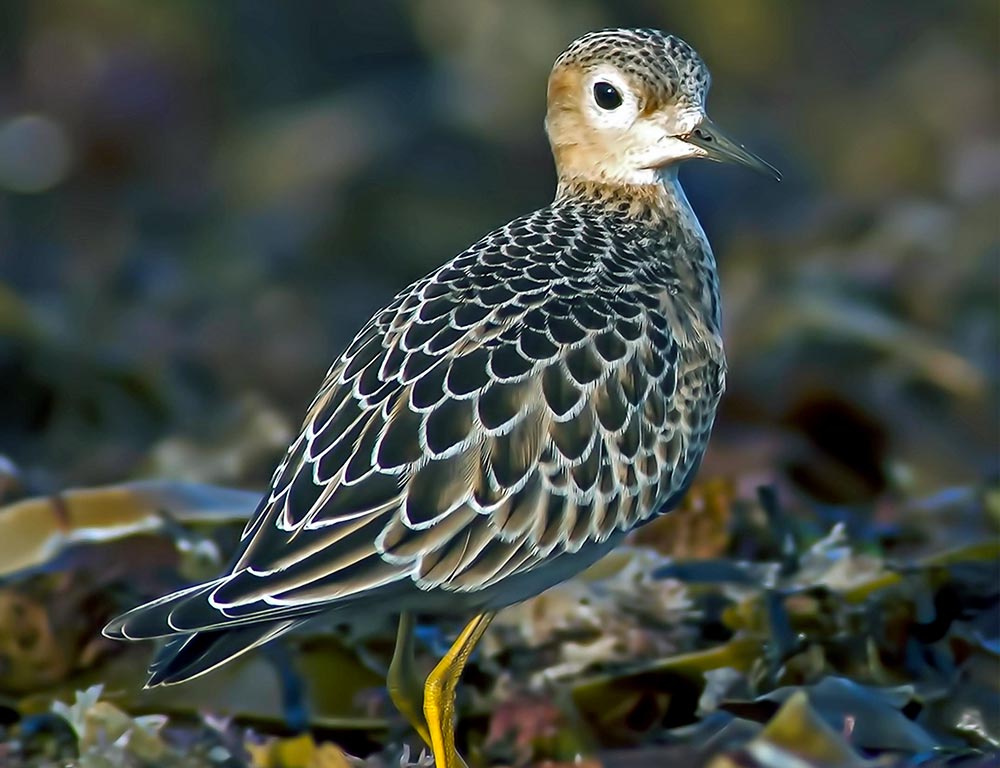
The buff-breasted sandpiper is a small shorebird of the calidrid sandpiper family. Its species name, subruficollis, is derived from Latin and refers to the reddish coloration of its neck and throat.
The name is composed of two Latin terms: subrufus, meaning “reddish”, and collis, meaning “-necked/-throated”. This species is a migratory bird, breeding in the Northern Hemisphere and winter in South America.
It is a common sight on the Arctic tundra and is easily identified by its reddish neck and throat. The buff-breasted sandpiper is a widely distributed species, with small populations found in North America, Europe, and Asia.
It is a small, slender bird, typically measuring 16-18 centimeters in length and weighing between 24-30 grams. Its plumage is generally gray and white, with a distinctive buff-colored breast.
It feeds mainly on insects, spiders, and other small invertebrates, which it finds by probing the ground with its long, slender bill.
| Kingdom | Animalia |
| Phylum | Chordata |
| Class | Aves |
| Order | Charadriiformes |
| Family | Scolopacidae |
| Genus | Calidris |
| Species | C. subruficollis |
5. Thayer’s Gull
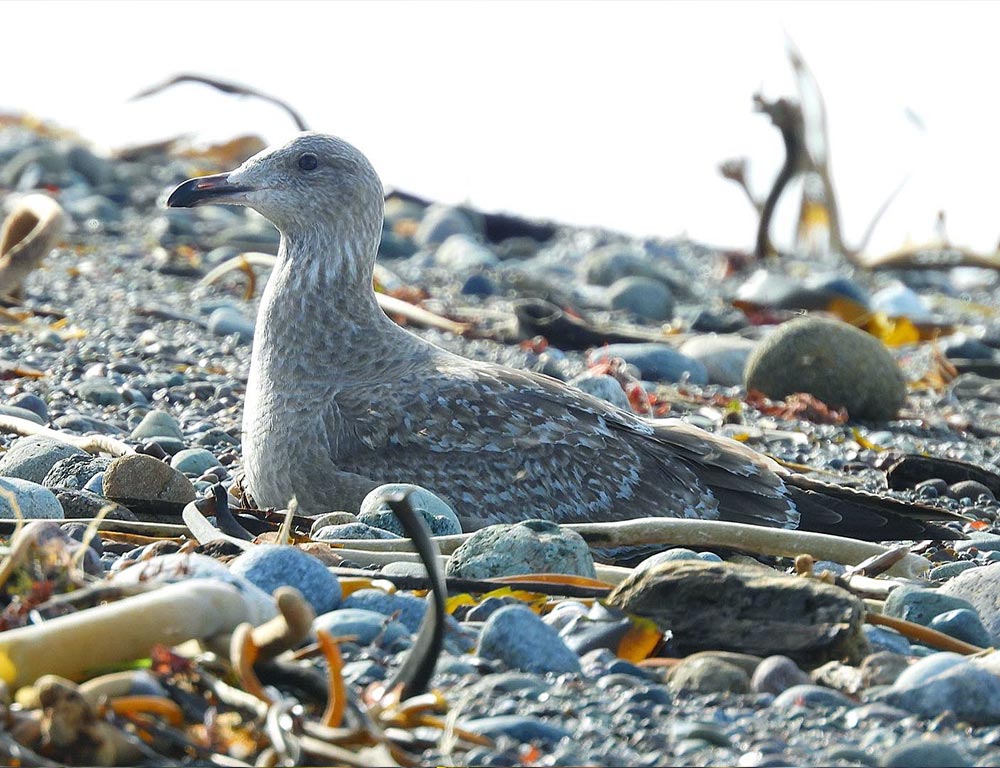
Thayer’s gull is a species of gull native to North America that belongs to the same family as the Iceland gull. It is a large bird, with a wingspan of around 58-66 cm and a body length of approximately 48-51 cm.
Thayer’s gulls have a distinctive white head and neck, gray back and wings, and a light to dark gray underside. They have black wing tips and black markings on their heads.
They also have a yellow bill with a red spot near the tip. Thayer’s gulls are omnivorous, meaning they will eat both plant and animal matter. They feed on small fish, crustaceans, insects, and plant material such as berries and grains.
In addition, they are known to scavenge for food, steal from other birds and mammals, or steal from humans. Thayer’s gulls nest in large colonies, often on rocky islands or sandbars. They lay two to three eggs per year, and the young are cared for by both parents.
The chicks fledge after about 4-5 weeks and are capable of flying after 6-7 weeks. Thayer’s gulls are considered to be of least concern in terms of conservation status. However, their populations are declining due to habitat loss, pollution, and overfishing.
As such, it is important to take steps to protect and conserve their habitat.
| Kingdom | Animalia |
| Phylum | Chordata |
| Class | Aves |
| Order | Charadriiformes |
| Family | Laridae |
| Genus | Larus |
| Species | L. glaucoides |
6. Iceland Gull
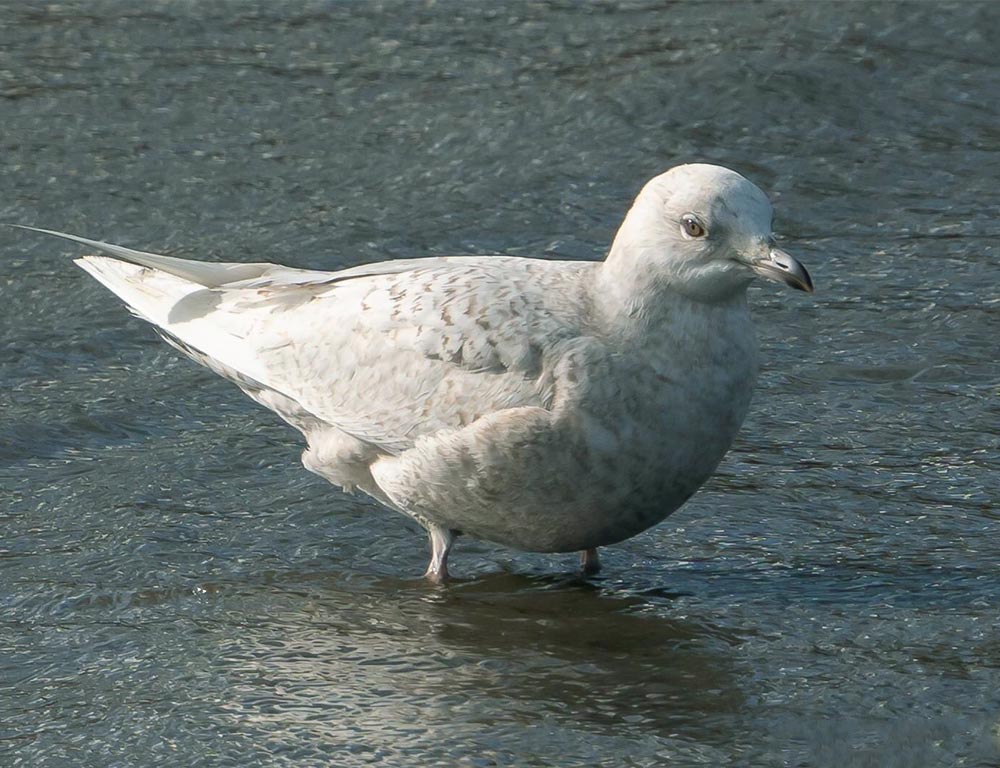
The Iceland gull is a type of seabird that is found in the Arctic regions of Canada and Greenland. Despite its name, it is not found in Iceland but rather migrates there in the winter to find food.
The scientific name for this bird is Larus, which is derived from the Latin word for “gull” or “seabird”.
This species of gull is considered to be medium-sized, typically having a wingspan of around 55–65 cm. It typically feeds on fish, insects, and other small animals.
Its plumage is mostly white with grey wings, and it has a white head with black markings around its eyes. During the winter, it will often form large roosts near coastal areas.
The Iceland gull is also known for its intelligence, as it has been observed using tools to help with feeding.
| Kingdom | Animalia |
| Phylum | Chordata |
| Class | Aves |
| Order | Charadriiformes |
| Family | Laridae |
| Genus | Larus |
| Species | L. glaucoides |
7. Smith’s Longspur
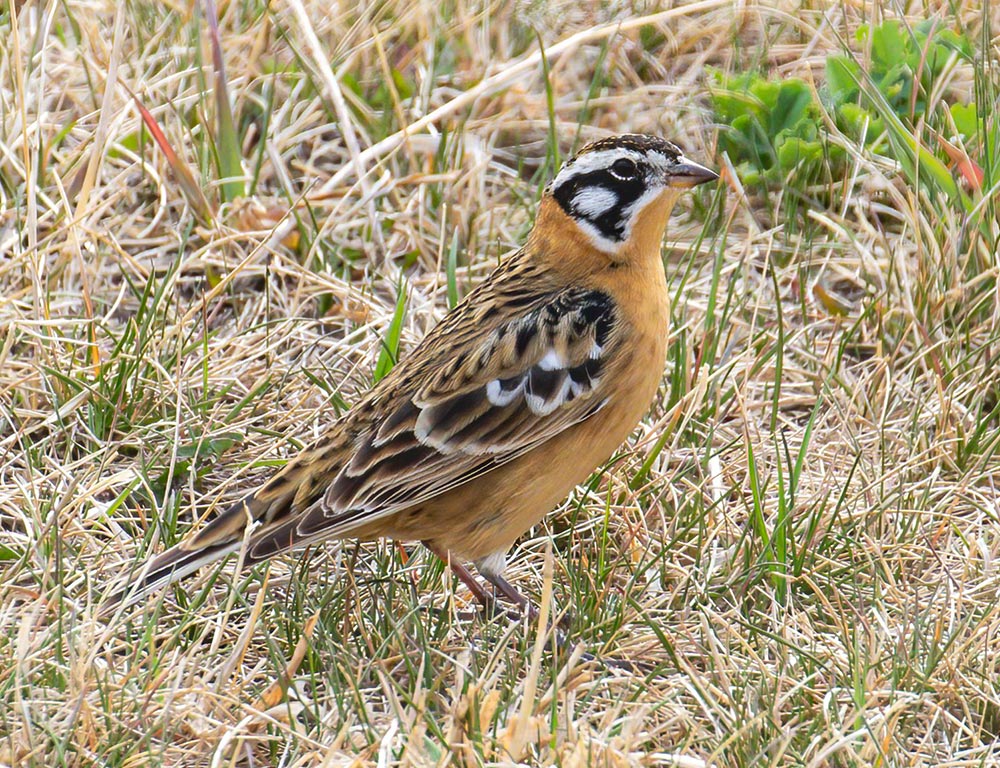
Smith’s Longspur is a species of bird belonging to the Calcariidae family, which includes all other types of spurs. It is commonly found in open habitats, and breeds in the northern parts of Canada and Alaska.
During winter, this species migrates to the south of the United States. The main diet of Smith’s Longspur consists of seeds, which it forages on the ground. During the summer, it also consumes insects as part of its diet.
This bird is known to be an important pollinator, as it helps in transferring pollen from one plant to another. It is also an important indicator of environmental health, as its presence or absence in an area can indicate the quality of the habitat.
| Kingdom | Animalia |
| Phylum | Chordata |
| Class | Aves |
| Order | Passeriformes |
| Family | Calcariidae |
| Genus | Calcarius |
| Species | C. pictus |
8. Harris’s Sparrow
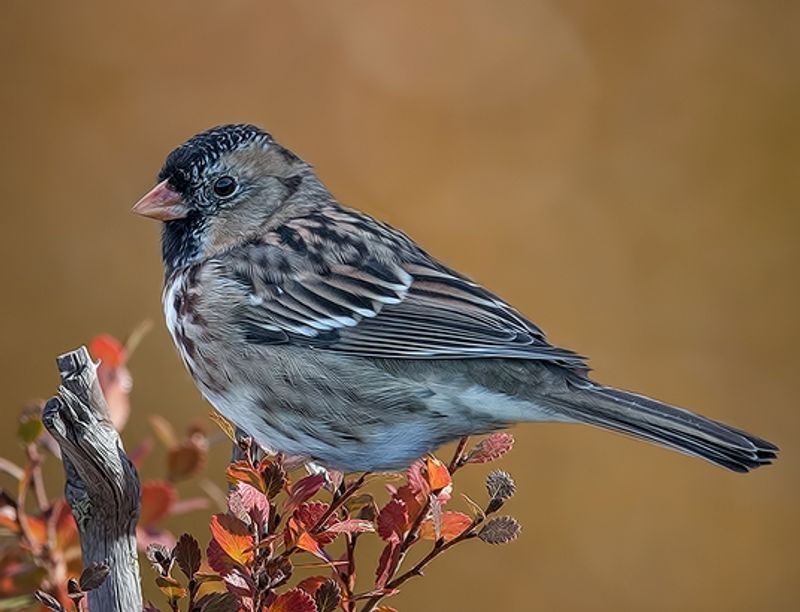
Harris’s sparrow is a large sparrow species that is endemic to Canada, meaning that it is only found in the country.
It breeds in the northern part of central Canada and migrates south in the winter to the Great Plains states of the United States, ranging from southern South Dakota to central Texas. This species is known for its large size, with a black bib and warm brown feathers on its back.
In the breeding season, Harris’s sparrows are found in open woodlands and grasslands, where they feed on grass seeds, insects, and berries. In the winter, they can be found in weedy fields, where they feed on seeds from various plants.
Additionally, they are known to form large flocks in the winter, which can be seen in the Great Plains states. Overall, Harris’s sparrow is a unique species that is endemic to Canada and migrates south to the United States for the winter.
Its large size and distinctive plumage make it easily identifiable, and its presence in the Great Plains states provides an important source of food for the winter months.
| Kingdom | Animalia |
| Phylum | Chordata |
| Class | Aves |
| Order | Passeriformes |
| Family | Passerellidae |
| Genus | Zonotrichia |
| Species | Z. querula |
Conclusion
Nunavut is home to a wide variety of bird species, ranging from the iconic snowy owl to the more elusive yellow-billed loon. These birds, along with many others, are essential to the health and prosperity of the region’s environment and ecosystems.
The local government is taking steps to protect and conserve these birds through both legislative and practical measures, which is helping to ensure that they will remain a part of the Nunavut landscape for many years to come.